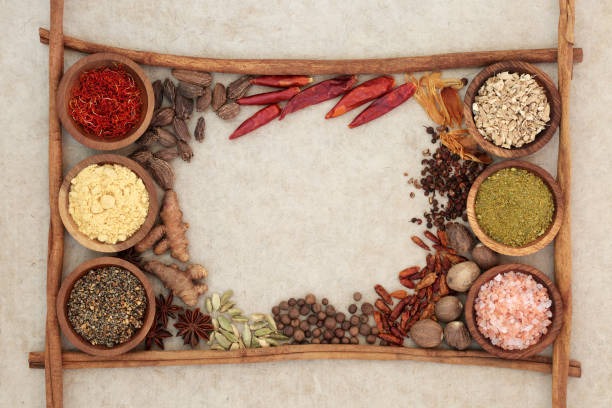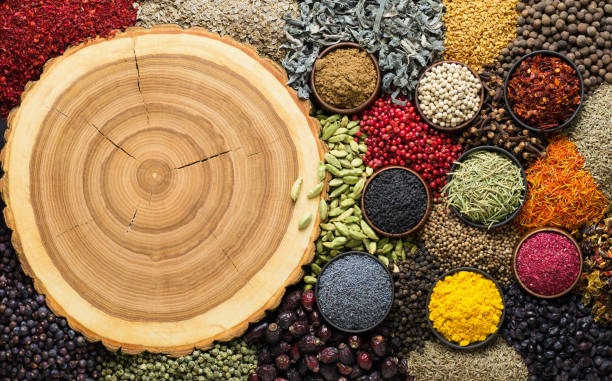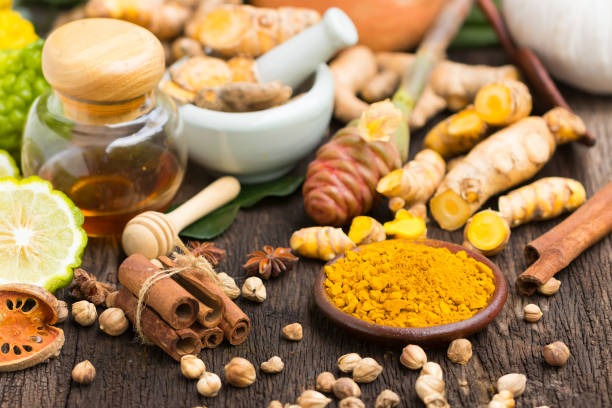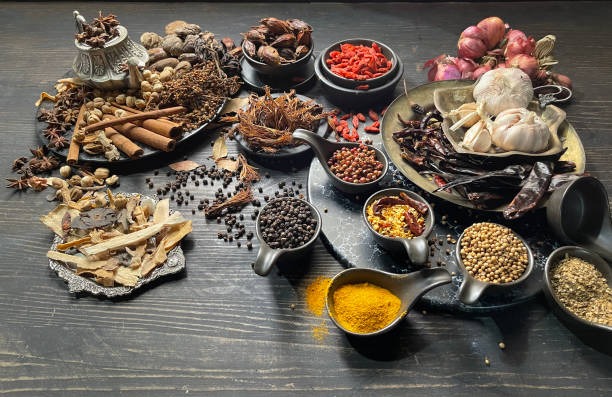When my grandmother first showed me her spice collection as a child, I had no idea I was looking at what many cultures consider nature’s pharmacy. Her weathered wooden cabinet held dozens of small glass jars, each containing powders and seeds that seemed almost magical in their ability to transform bland ingredients into aromatic masterpieces. What I learned years later, after diving deep into nutrition science, was that these traditional spices weren’t just flavor enhancers—they were potent health allies that humans have relied on for thousands of years.
Traditional spices have been treasured across civilizations not just for their ability to make food delicious, but for their remarkable medicinal properties. From turmeric’s anti-inflammatory powers to cinnamon’s blood sugar regulation benefits, these natural ingredients offer a wealth of health advantages that modern science is only beginning to fully understand. Unlike synthetic supplements, spices provide complex combinations of bioactive compounds that work synergistically to support our health.
This comprehensive guide explores the fascinating world of traditional spices, their proven health benefits, and practical ways to incorporate them into your daily routine. Whether you’re looking to boost your immune system, reduce inflammation, or simply add more nutritional value to your meals, understanding these time-tested ingredients can transform both your cooking and your wellbeing.
We’ll journey through history to understand how different cultures discovered these benefits, examine the science behind their therapeutic properties, and provide actionable advice for making spices a cornerstone of your healthy lifestyle. By the end, you’ll have the knowledge to turn your spice rack into a powerful tool for better health.
The Fascinating History of Spices
The story of spices reads like an adventure novel filled with exploration, trade wars, and cultural exchange. Long before modern medicine existed, ancient civilizations recognized that certain plant materials could heal ailments, preserve food, and enhance overall health. Archaeological evidence suggests that humans have been using spices for over 50,000 years, with early discoveries in caves showing traces of mustard seed and other aromatic plants.
Ancient Egypt stands out as one of the most sophisticated early adopters of spice medicine. Egyptian physicians documented the use of coriander, fennel, and garlic in medical papyri dating back to 1550 BCE. They understood that these ingredients could treat digestive issues, respiratory problems, and even serve as natural preservatives for both food and mummification processes.
The spice trade literally shaped world history, driving exploration and establishing trade routes that connected distant continents. European explorers risked their lives crossing treacherous seas to reach the “Spice Islands” of Indonesia, where nutmeg, cloves, and black pepper grew abundantly. These spices were so valuable they were sometimes worth more than gold, leading to the establishment of trading companies and colonial empires.
Traditional Chinese Medicine (TCM) and Ayurveda, two of the world’s oldest medical systems, built entire therapeutic frameworks around spices and herbs. These systems recognized that food and medicine were intimately connected, developing detailed classifications of spices based on their heating or cooling properties, their effects on different organ systems, and their ability to balance the body’s energy.
Health Benefits of Key Traditional Spices

Turmeric: The Golden Healer
Turmeric deserves its reputation as one of the most powerful healing spices on the planet. The active compound curcumin gives turmeric its distinctive golden color and provides potent anti-inflammatory effects that rival some pharmaceutical drugs. Research has shown that curcumin can help reduce markers of inflammation in the body, potentially lowering the risk of chronic diseases like heart disease, cancer, and Alzheimer’s.
Key Benefits:
- Reduces inflammation throughout the body
- Supports joint health and mobility
- May improve brain function and memory
- Provides antioxidant protection against cell damage
- Supports healthy digestion
The bioavailability of curcumin increases dramatically when combined with black pepper, which contains piperine. This is why traditional curry recipes often include both spices together—ancient cooks intuitively understood this synergistic relationship.
Cinnamon: The Sweet Medicine
Ceylon cinnamon, often called “true cinnamon,” offers impressive health benefits beyond its delightful flavor. This aromatic bark contains compounds that can help regulate blood sugar levels, making it particularly valuable for people managing diabetes or prediabetes. Studies have shown that as little as half a teaspoon daily can improve insulin sensitivity.
Key Benefits:
- Helps regulate blood sugar and insulin levels
- Provides powerful antioxidant protection
- May reduce risk of heart disease
- Has natural antimicrobial properties
- Supports healthy brain function
Unlike cassia cinnamon (the common grocery store variety), Ceylon cinnamon contains minimal amounts of coumarin, a compound that can be harmful in large quantities. Investing in quality Ceylon cinnamon ensures you get maximum benefits without potential risks.
Ginger: The Digestive Champion
Fresh ginger root has been my go-to remedy for nausea and digestive upset for years, and science backs up this traditional use. The active compounds gingerol and shogaol provide powerful anti-nausea effects, making ginger effective for motion sickness, morning sickness during pregnancy, and chemotherapy-induced nausea.
Key Benefits:
- Relieves nausea and motion sickness
- Reduces inflammation and pain
- Supports healthy digestion
- May boost immune system function
- Helps reduce muscle soreness after exercise
Ginger works particularly well as a fresh tea made by steeping sliced root in hot water, or grated fresh into smoothies and stir-fries. The fresh form typically provides more potent therapeutic compounds than dried powder.
Garlic: Nature’s Antibiotic
Garlic has earned its reputation as a natural antibiotic through thousands of years of traditional use and modern scientific validation. When garlic cloves are crushed or chopped, they release allicin, a sulfur compound with powerful antimicrobial properties. Regular garlic consumption has been linked to reduced risk of heart disease, certain cancers, and improved immune function.
Key Benefits:
- Supports cardiovascular health
- Provides natural antimicrobial effects
- May help lower blood pressure and cholesterol
- Supports immune system function
- Contains potent antioxidant compounds
To maximize allicin production, crush or chop garlic and let it sit for 10 minutes before cooking. This allows the enzymatic reaction that creates allicin to occur fully.
Traditional Spices Across Different Cuisines

Mediterranean Spice Wisdom
Mediterranean cuisine showcases how traditional spices can create both incredible flavors and significant health benefits. Oregano, thyme, and rosemary—staples of this region—contain high levels of antioxidants and antimicrobial compounds. The famous herb blend za’atar combines several of these herbs with sumac and sesame seeds, creating a nutritional powerhouse.
The liberal use of garlic, onions, and fresh herbs in Mediterranean cooking contributes to the region’s reputation for longevity and low rates of chronic disease. These ingredients work synergistically to provide anti-inflammatory benefits and support cardiovascular health.
Indian Ayurvedic Spice Blends
Indian cuisine demonstrates perhaps the most sophisticated understanding of spice medicine through its complex spice blends called masalas. Each blend is carefully crafted to balance flavors while providing specific health benefits. Garam masala, for example, typically contains warming spices like cinnamon, cardamom, and cloves that support digestion and circulation.
Curry powder, despite being a British invention, draws from traditional Indian spice combinations that include turmeric, coriander, cumin, and fenugreek. These spices work together to support digestive health, reduce inflammation, and provide antioxidant protection.
Asian Healing Spice Traditions
Traditional Chinese cuisine emphasizes the medicinal properties of spices through the concept of food as medicine. Star anise, commonly used in Chinese five-spice powder, contains shikimic acid, the precursor to the antiviral drug Tamiflu. Sichuan peppercorns provide unique numbing properties while supporting digestive function.
Japanese cuisine traditionally uses wasabi, ginger, and various seaweeds that provide antimicrobial benefits—particularly important when consuming raw fish. Korean cuisine features ginger, garlic, and chili peppers prominently, creating dishes that support immune function and circulation.
Practical Ways to Incorporate More Spices
Start Your Day with Spice
Morning beverages offer an excellent opportunity to incorporate beneficial spices into your routine. Golden milk, made with turmeric, ginger, cinnamon, and black pepper in warm plant-based milk, provides anti-inflammatory benefits to start your day. Chai tea blends combine multiple therapeutic spices including cardamom, cinnamon, ginger, and cloves.
Adding cinnamon to your morning coffee or oatmeal can help stabilize blood sugar levels throughout the day. A pinch of cayenne in warm lemon water can boost circulation and metabolism.
Spice Blends for Easy Integration
Creating your own spice blends makes it simple to add multiple beneficial spices to any dish. Mix turmeric, cumin, coriander, and black pepper for a basic curry blend. Combine oregano, thyme, rosemary, and garlic powder for a Mediterranean blend perfect for roasted vegetables or proteins.
Anti-Inflammatory Blend:
- 2 tbsp turmeric
- 1 tbsp ginger powder
- 1 tsp cinnamon
- 1/2 tsp black pepper
- 1/2 tsp cayenne (optional)
Cooking Techniques for Maximum Benefits
The way you prepare and cook spices significantly affects their therapeutic value. Toasting whole spices in a dry pan before grinding releases essential oils and enhances both flavor and health benefits. However, avoid overheating delicate spices like turmeric, as excessive heat can destroy beneficial compounds.
Fat-soluble compounds in spices like turmeric and black pepper are better absorbed when consumed with healthy fats. Adding a small amount of coconut oil, olive oil, or even a piece of avocado to spiced dishes can dramatically improve absorption.
Potential Risks and Important Considerations
Understanding Spice Interactions
While spices are generally safe for most people, some can interact with medications or cause issues for individuals with certain health conditions. Turmeric, for example, can enhance the effects of blood-thinning medications, potentially increasing bleeding risk. If you’re taking any medications, consult with your healthcare provider before significantly increasing your spice intake.
Cinnamon contains coumarin, which can be harmful to the liver in large quantities. Stick to Ceylon cinnamon when possible, and moderate your intake to reasonable culinary amounts rather than therapeutic doses without professional guidance.
Quality and Sourcing Matters
Not all spices are created equal. Many commercial spice powders lose potency quickly and may contain fillers, artificial colors, or contaminants. Whole spices generally retain their therapeutic compounds longer than pre-ground versions. When possible, buy from reputable sources that can provide information about origin and processing methods.
Organic spices reduce exposure to pesticides and often provide better flavor and therapeutic value. However, organic certification doesn’t guarantee quality, so combine organic sourcing with other indicators like aroma, color, and freshness date.
Individual Tolerance and Sensitivity
Some people may experience digestive upset, allergic reactions, or other sensitivities to certain spices. Start with small amounts when incorporating new spices into your routine, and pay attention to how your body responds. Pregnant and nursing women should be particularly cautious with medicinal doses of spices, though culinary amounts are generally safe.
Smart Strategies for Sourcing and Storing Spices

Finding Quality Sources
Specialty spice shops often provide higher quality products than general grocery stores. Look for businesses that have high turnover, can tell you about sourcing, and offer spices with vibrant colors and strong aromas. Online retailers specializing in spices can also provide access to high-quality, fresh products.
Farmers markets sometimes offer locally grown or small-batch spices that can provide exceptional quality. Building relationships with vendors allows you to learn about their growing and processing methods.
Proper Storage Techniques
Heat, light, and air are the enemies of spice potency. Store spices in airtight containers away from the stove, windows, and other heat sources. Glass jars with tight-fitting lids work well, as do high-quality plastic containers designed for spice storage.
Label containers with purchase dates and replace ground spices every 1-2 years, whole spices every 3-4 years. However, trust your senses—if a spice has lost its aroma or color, it’s time to replace it regardless of the date.
Storage Best Practices:
- Keep containers sealed when not in use
- Store in cool, dark locations
- Use clean, dry spoons to avoid introducing moisture
- Consider refrigerating some fresh spices like ginger
- Freeze-dry fresh herbs to preserve more nutrients than air-drying
People Also Ask About Traditional Spices
What spices have the most health benefits?
Turmeric, ginger, cinnamon, garlic, and cayenne pepper consistently rank among the most beneficial spices based on scientific research. These spices provide anti-inflammatory, antioxidant, and various therapeutic properties that support overall health.
How much spice should I eat daily for health benefits?
Most research suggests that even small culinary amounts provide benefits. For example, 1/2 teaspoon of cinnamon daily can help with blood sugar regulation, while consuming turmeric with black pepper several times per week provides anti-inflammatory benefits. Always start small and increase gradually.
Are fresh spices better than dried spices?
Fresh spices often contain higher levels of certain compounds, particularly volatile oils that provide aroma and some therapeutic benefits. However, dried spices can be more concentrated in other compounds and are more practical for daily use. The best approach is using both depending on the spice and application.
Can spices replace medications?
Spices can be powerful allies for health, but they should complement, not replace, appropriate medical care. While research shows spices can provide significant health benefits, serious medical conditions require professional medical treatment. Always consult healthcare providers before using spices therapeutically.
Frequently Asked Questions
Q: Can I take spice supplements instead of using cooking spices?
A: While spice supplements can provide concentrated doses of beneficial compounds, using whole spices in cooking offers several advantages. Cooking spices provide fiber, multiple beneficial compounds working together, and better integration with meals for improved absorption. Supplements should complement, not replace, a spice-rich diet.
Q: Are there any spices I should avoid during pregnancy?
A: Most culinary amounts of common spices are safe during pregnancy, but some should be limited. Large amounts of cinnamon, high doses of ginger, and certain herbs like fenugreek may need to be restricted. Always consult with your healthcare provider about spice intake during pregnancy.
Q: How can I tell if my spices are still potent?
A: Fresh, potent spices should have strong aroma, vibrant color, and distinct flavor. If spices smell weak, look faded, or taste bland, they’ve likely lost much of their therapeutic value. Rubbing a small amount between your fingers should release noticeable fragrance.
Q: Do cooking methods affect spice benefits?
A: Yes, cooking methods significantly impact spice potency. High heat can destroy some beneficial compounds, while light cooking or combining with fats can enhance absorption of others. Gentle heating, such as light sautéing or adding spices near the end of cooking, often preserves the most benefits.
Q: Can children safely consume therapeutic spices?
A: Children can generally enjoy spices in normal cooking amounts, and doing so may help them develop broader palates and receive health benefits. However, very young children and those with sensitivities should start with mild spices in small amounts. Avoid giving children concentrated spice preparations without pediatric guidance.
Embracing Spices as Your Health Partners
The journey through traditional spices reveals a remarkable truth: some of our most powerful health allies have been sitting in our kitchens all along. These aromatic treasures represent thousands of years of human wisdom about using food as medicine, validated by modern scientific research that continues to uncover new benefits.
Incorporating traditional spices into your daily routine doesn’t require dramatic dietary changes or expensive supplements. Start small by adding a pinch of cinnamon to your morning routine, experimenting with turmeric in golden milk, or creating simple spice blends for your favorite dishes. Pay attention to quality, proper storage, and your body’s responses as you gradually expand your spice repertoire.
Remember that the most powerful approach combines traditional wisdom with modern knowledge. Use spices as part of a balanced, whole-foods diet rather than expecting them to compensate for poor overall nutrition. Build relationships with quality spice sources, experiment with new combinations, and trust your palate to guide you toward the flavors and benefits that serve your body best.
The spices that once drove global exploration and trade wars are now accessible to anyone willing to explore their potential. By embracing these traditional ingredients, you’re not just enhancing your meals—you’re connecting with an ancient tradition of using nature’s pharmacy to support vibrant health and longevity.
Meta data
Meta title
Traditional Spices Health Benefits: Complete Guide 2024
Meta description
Discover the powerful health benefits of traditional spices like turmeric, cinnamon, and ginger. Learn how to use nature’s pharmacy for better health.

